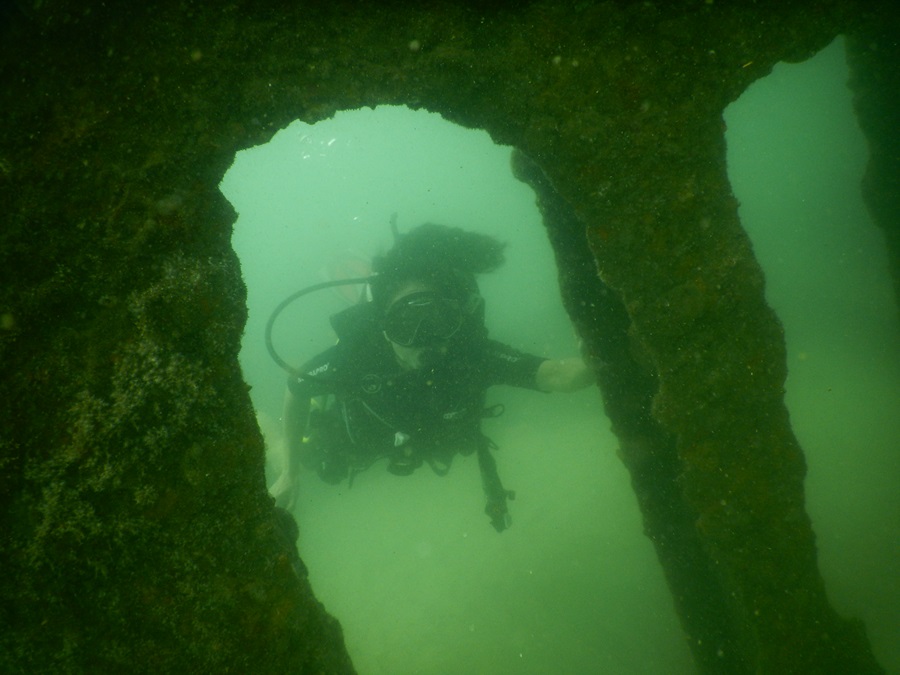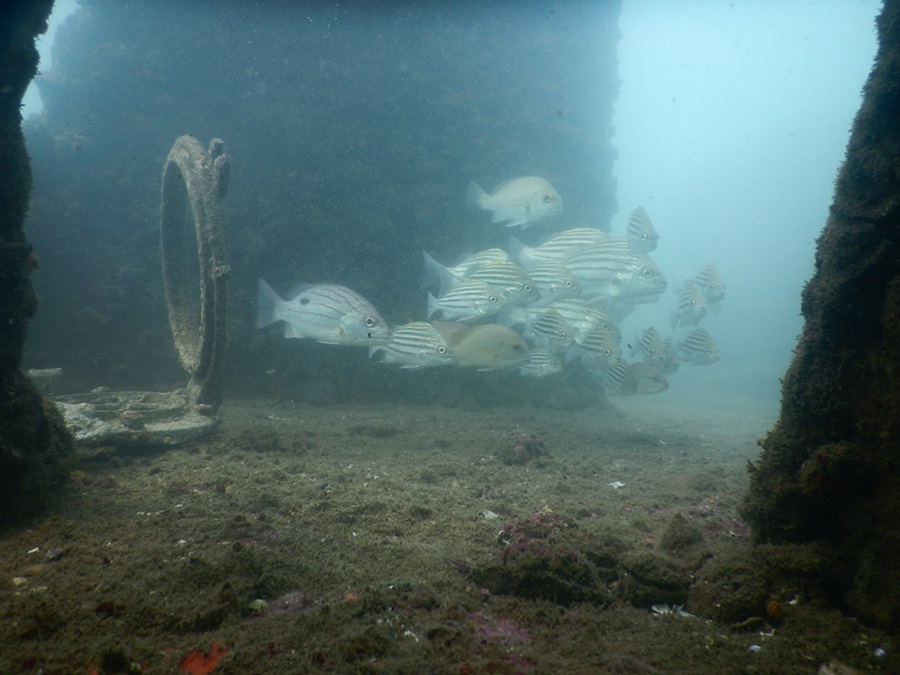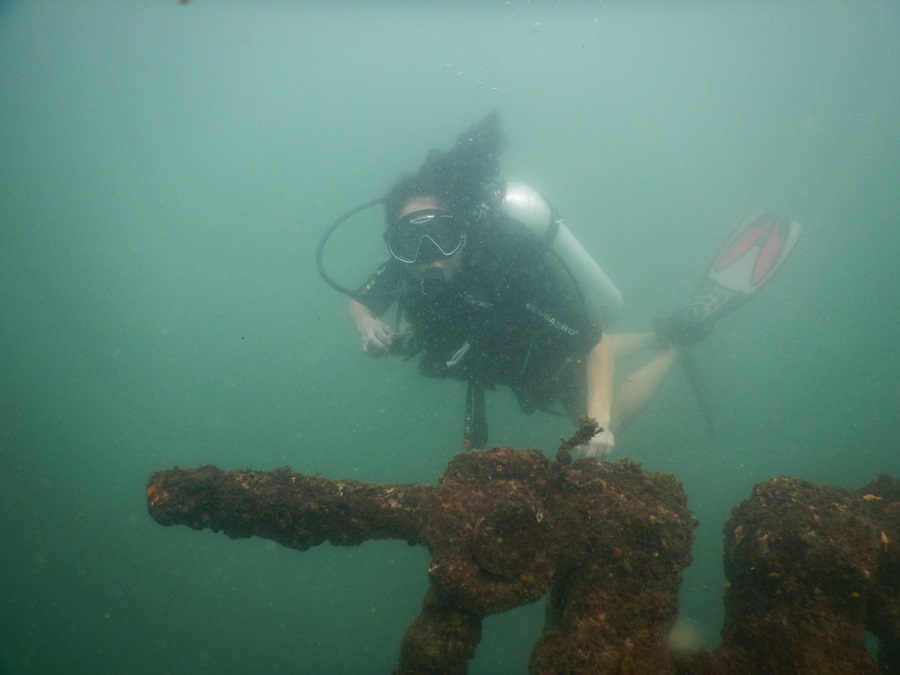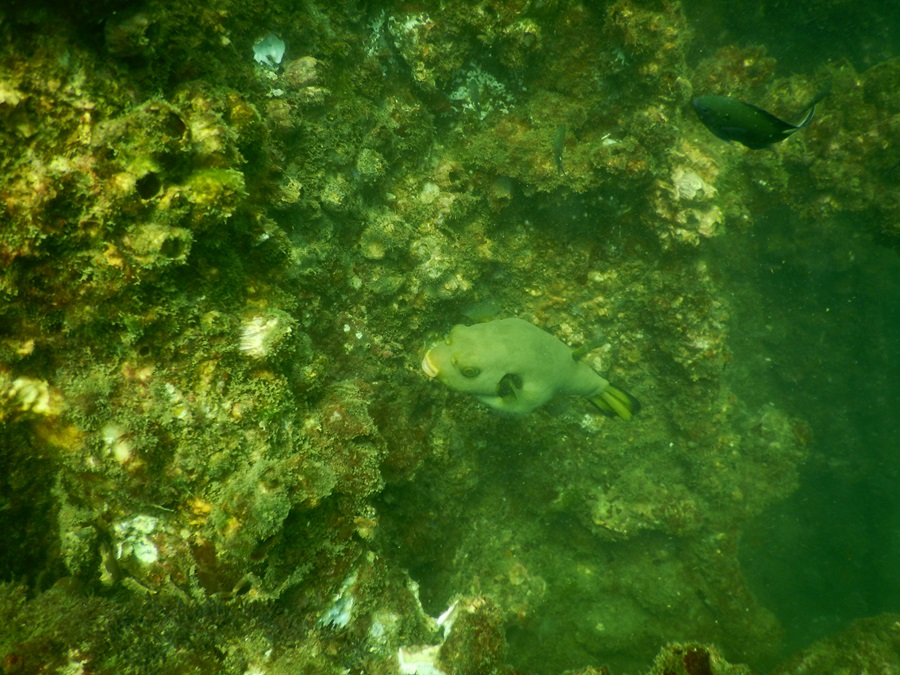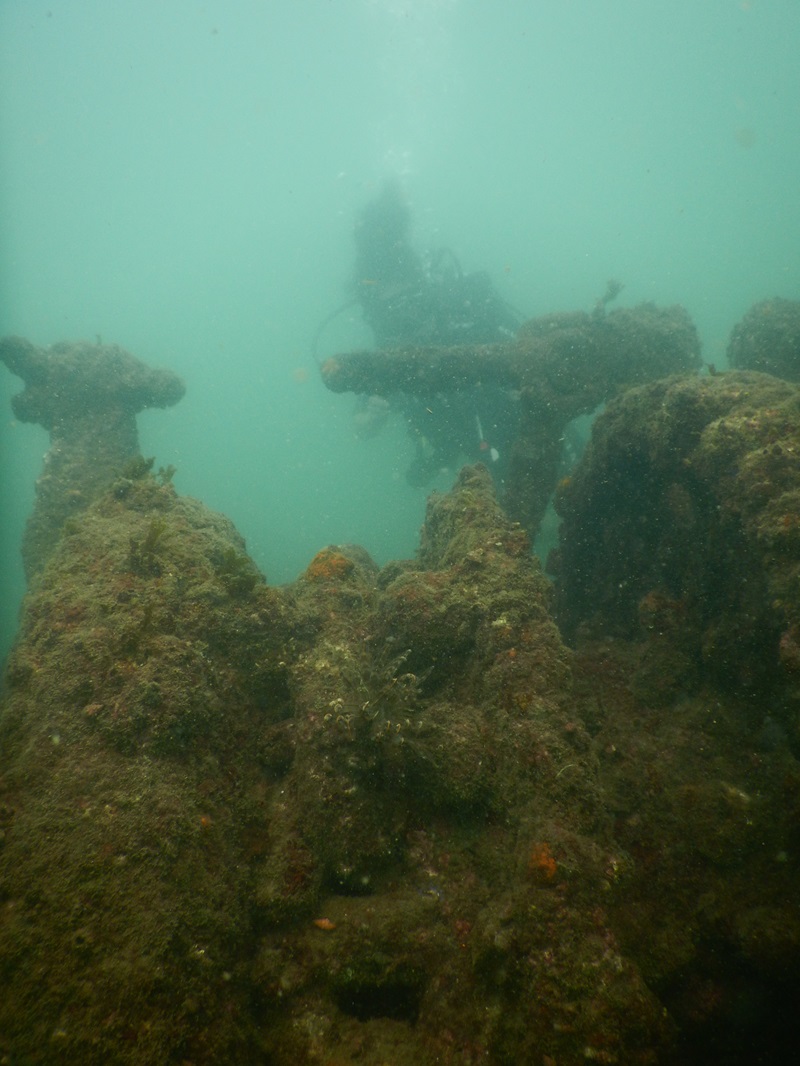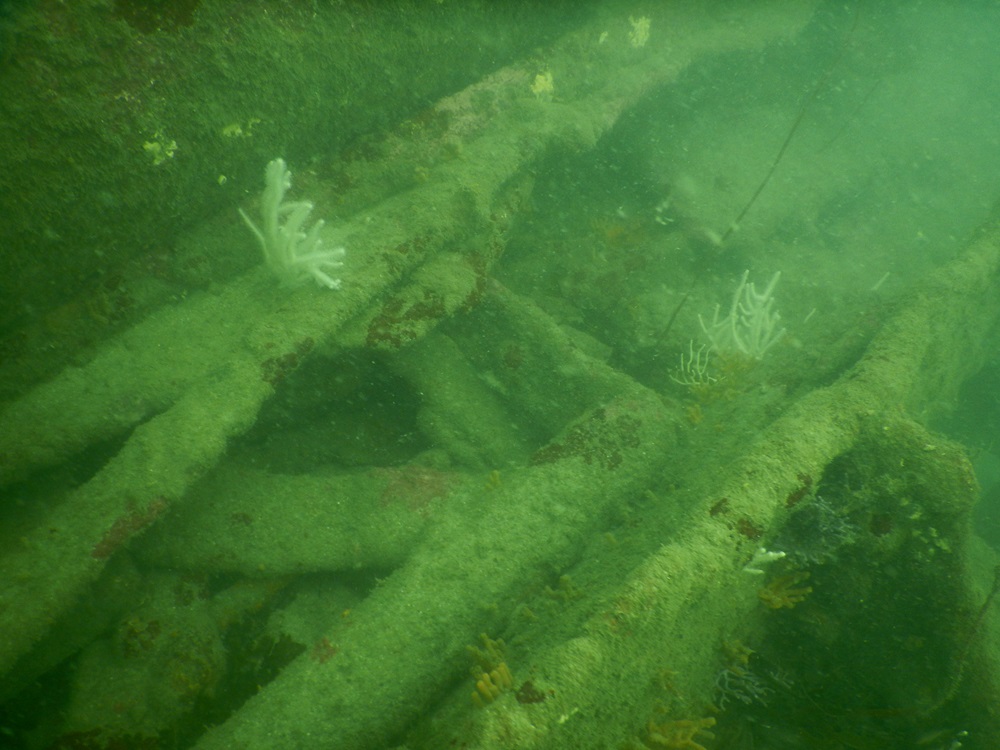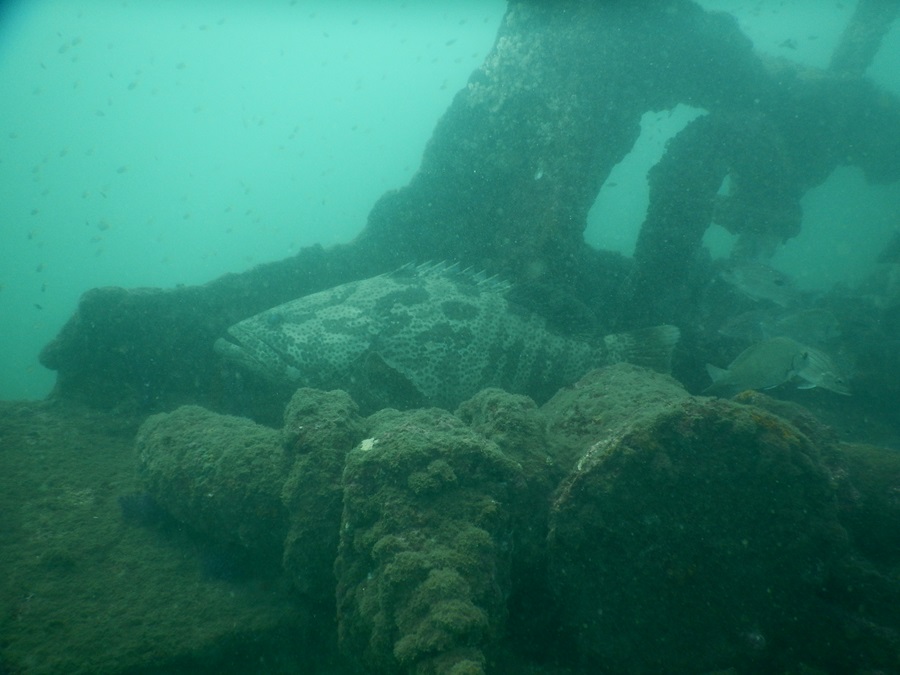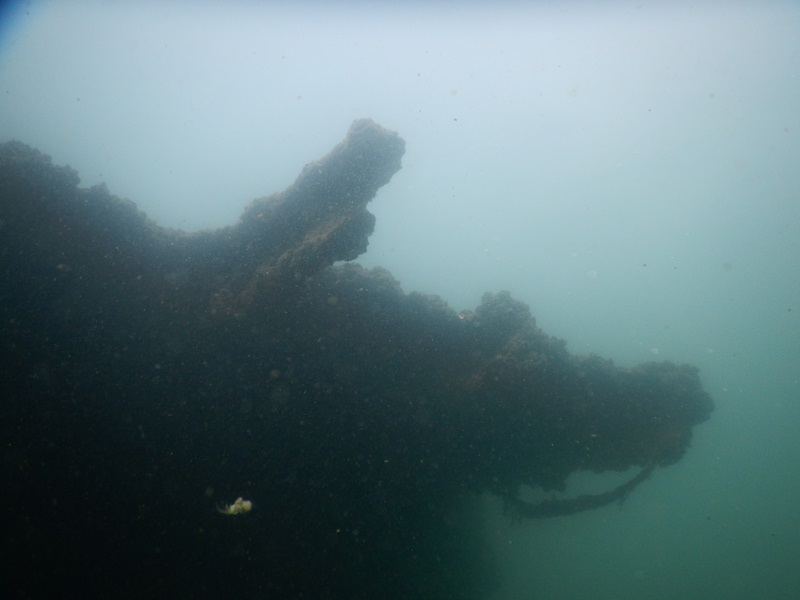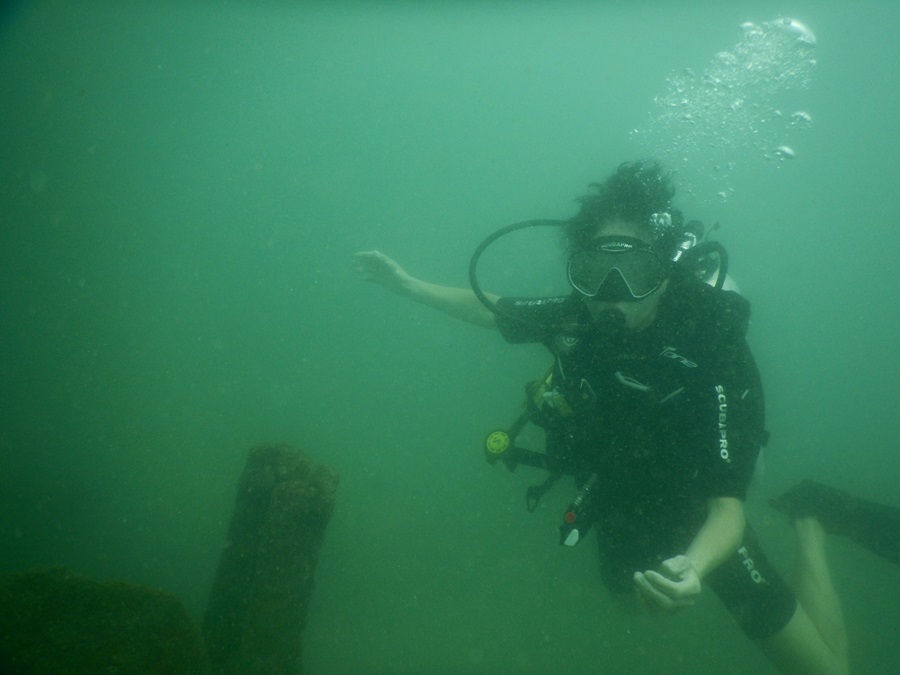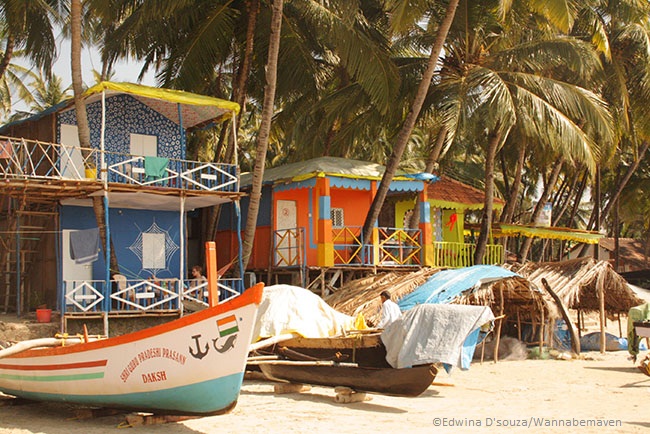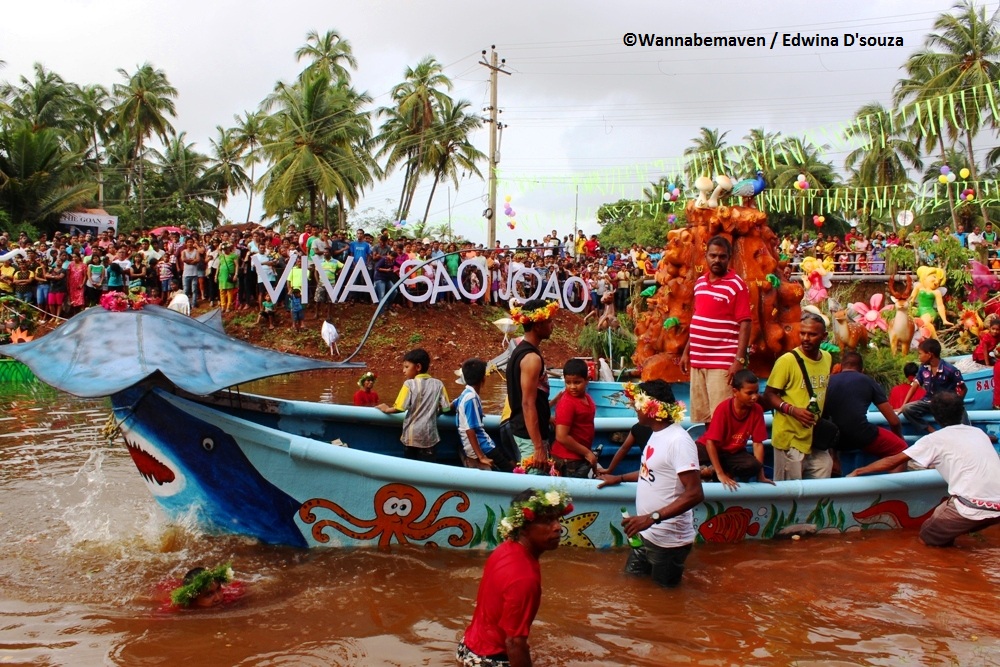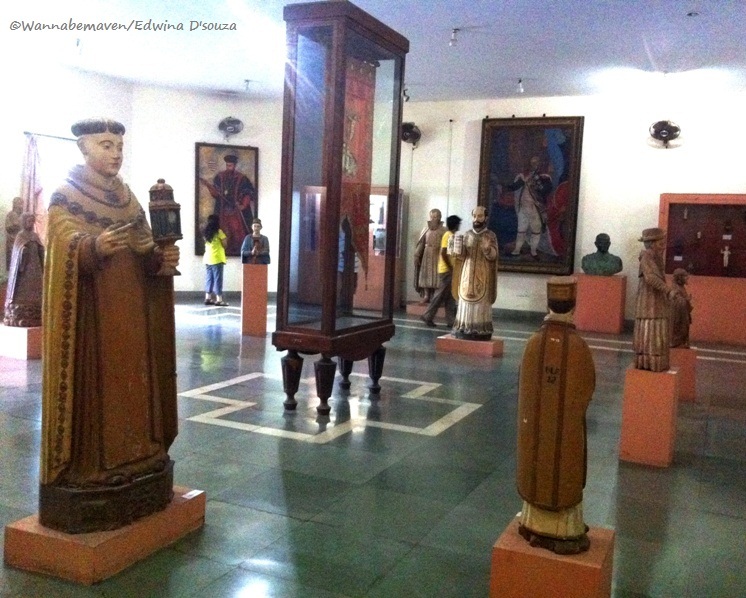On a balmy evening, I visited my dive shop in Candolim, a coastal village in North Goa. As I walked inside the premises buzzing with activity near the indoor pool, Christian, a young twenty-something American introduced himself as my dive instructor. Christian would later reveal that he’s here for the quarter since its peak diving season in Goa. I tried my dive suit and finalized my gear in preparation for my scuba diving in Goa adventure. He filled me in on the plan of action and hinted at the possibility of diving at a shipwreck if weather permitted the following day.
Goa’s waters and maritime trade
Goa has had an illustrious maritime past. The earliest shipwreck near Goa was referenced to be a sunken ship belonging to King Guhalladeva I around the 11th century. Marine archaeologists also indicate the presence of shipwrecks belonging to the Kadamba dynasty in Goa.
During the 18th and 19th centuries, sea trade in Goa flourished under Portuguese, which denoted the possibility of many capsized vessels from the colonial era lying silently beneath the surface of the sea. Some legends say that around 600 shipwrecks are buried in the ocean bed in and around Goa. According to the National Institute of Oceanography, the oldest Portuguese wreck in India settled off the Sunchi Reef near Goa’s Mormugao harbor. There’s also an 1880s steamship that sank at the Amee Shoals off Goa’s coast. Another Italian ship and three German vessels were sunk by British war veterans during World War II near Goan waters. More recently, in 2016, the wreckage of a Pakistani trawler was found in the Zuari River – the largest river in the state – meeting the Arabian Sea near Cabo Aguada.
Most of these shipwrecks remain out of bounds, but two are in diveable range and accessible for recreational diving in Goa.
Where to dive in Goa?
Goa Diving site 1: Sank without a trace, or not?
On the morning of our dive, I reached the assembly point in Nerul, a sleepy hamlet along the Mandovi River in the northern region of the state. Here I was joined by Christian, three more male dive instructors, and my diving buddy, a young woman from Germany who was backpacking in Goa. We exchanged quick pleasantries and continued onward to Nerul jetty for a 45-minute boat ride to reach Ilha Grande, an island off Arabian coast near Vasco which was the base for our diving pursuits.
Our first dive was to a site called Suzy’s Wreck, also known as SS Rita. She was a sunken ship southwest of Ilha Grande that capsized sometime in the 1950s while carrying railroad tracks. The word around is that the vessel ran aground after encountering a storm and now rests in the shallow and sandy bay off Ilha Grande making it an ideal dive site for beginners.
We surveyed the waters, completed our safety checks, and back-rolled one-by-one into the sea. After a final deep breath, we deflated the buoyancy control device and descended from the surface to a depth of about 11m. The first couple of minutes went by in focussing on my breathing and maintaining the right buoyancy underwater. The poor visibility wasn’t helping either. But as we reached the seafloor, I became at ease and delightfully observant of the small groups of Moorish Idols and Angelfish gracefully swimming near me.
Experienced wreck divers will tell you that you need formal training for deep exploration of shipwrecks. Since ours was a recreational dive, we lingered around the periphery of SS Rita. As we inched closer towards the sunken vessel, I was awe-struck by the way the ship had aged after spending half a century underwater. A 100 feet metal wreck remained of the oceanic ruin that was covered with mollusks and fan corals. Much of the vessel had turned into a town colonized by fishes such as Nudibranch, Scorpionfish, goatfish, Polyclad flatworms, stingrays, batfish, snappers, and sweet lips. I found peak Zen marveling at all the animate and inanimate sights of the sea in silence, able to hear nothing but the sound of my breathing.
Thirty minutes past our hard stop we turned around and started our ascent to be back on board for our surface interval between two dives and to allow our bodies to release absorbed nitrogen.
Goa diving site 2: Grave of the lost at sea
For our second dive, we headed 20 minutes south of the SS Rita wreckage to a site named Davy Jones’ Locker. Many believe that the metallic remains at Davy Jones’ Locker are the stern of SS Rita that broke and settled 600 meters away. Others deem the wreckage is of some unknown sunken ship.
The etymology for Davy Jones’ Locker is an interesting one. According to sea legends, Davy Jones’ Locker is a euphemism for a grave of drowned sailors and shipwrecks in the depths of the ocean. While the origin of the term is unknown, it is widely believed that Davy is a corruption of a West Indian word for “devil” and Jones refers to the biblical Jonah who was swallowed by a whale. In popular culture, Davy Jones is also referenced in the celebrated Disney franchise ‘Pirates of the Caribbean’ featuring a character of a ghostly captain sending people to the locker under the sea.
Due to its moderate water currents and low visibility, Goa’s Davy Jones’ Locker is mostly reserved for experienced divers. Barely six dives old since I got my diving license, I threaded cautiously under the watchful eye of my instructor, as we descended into the void holding on to a rope while navigating currents. The sight of blackness loomed as we inched closer to a ghostly ruin in the seabed. It was beautiful yet terrifyingly mysterious. We hovered around the fallen decks at a depth of about 14 meters and spotted an incredible fish life of resident groupers, barracudas, and damselfish taking refuge here. There was a huge propeller, still intact, and beneath it were schools of tuna, parrotfish, and wrasse living in unison.
Like all good things come to an end, our time underwater got up past forty minutes and we ascended unhurriedly through the rope towards the sun. Back on the surface, it was strange to believe that the deep blue abyss with mysterious ruins and beautiful sea creatures we just hung around, and the shore we had returned to, were part of the same world.
Diving in Goa had come with its charm. To celebrate a day of great dives, I walked into a shack later that evening and treated myself to a beer. As I sat by the sea by myself and watched waves crash onto the rocks, it sank in that Goa holds many untold stories waiting to be discovered. If only one is willing to ‘dive’ into its past.
Dive shop for Scuba Diving in Goa
A couple of dive shops in Goa offer diving courses for beginners, as well as fun dives for experienced divers. I signed up with Scuba Evolution – a PADI 5Star and Instructor Development Dive Resort in Candolim, North Goa (www.scubaevolutionindia.com). If you’re looking for diving packages in Goa. check them out here.
Cost of Scuba Diving in Goa
Certified diving courses begin from 18000 INR (inclusive of gear and light snacks at sea)
Fun dives begin at 5800 INR (inclusive of gear and light snacks at sea)
Best time to do Scuba Diving in Goa
The dive season in Goa begins from October until May. Water temperatures are in the range of 27 to 30 degrees, and the dives are in the 10 to 15m range. The water visibility varies between 5 to 10m over the season.
Snorkeling option and gear
In addition to diving, many adventure enthusiasts also go snorkeling in Goa. Exploring the underwater world while floating on the surface offers a unique perspective on Goa’s marine life. While dive shops in Goa typically provide snorkeling gear, having your own snorkeling gear is a long term investment for a personalized and comfortable snorkeling experience. I’ve invested in this one.
Where to stay in Goa while Scuba Diving
If you plan to stay in North Goa, Siolim House is a great option. It is located in Siolim village and convenient to visit most of the north side beaches like Morjim, Vagator and Baga.
Other options to stay in Goa based on categories:
Budget: Casa Anjuna in North Goa has a cool decor and spacious rooms with a pool
Mid Range: Beleza by the beach in Colva is great if you’re planning to stay in South Goa. It has elegant rooms and private access to the beach
Getting there
Daily direct flights are easily available from all major metros to Goa. Entering through the new MOPA airport in North Goa is a better option if you’re planning to hang around the Northern part of Goa. It is best to compare flights on Skyscanner before booking.
Getting out
A full day trip to Dudhsagar waterfalls is worth it and should be on your list. Ganpatipule in Maharashtra has pristine beaches that are still uncrowded – A 5 hour drive from Goa towards Mumbai. A lot of tourists take an overnight bus from Goa to Hampi to explore the UNESCO heritage site in Karnataka. Hampi has a great backpacker vibe. Gokarna is quickly becoming a popular beach holiday destination. A lot of tourists coming into Goa for long-stays also make some time to visit Gokarna – roughly a 4 hour drive.
